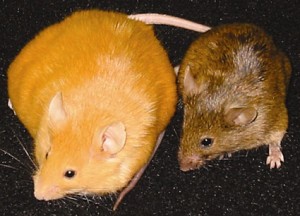 Yesteray was the first full day of the 2011 International Congress on Human Genetics in Montr├®al. This is the largest gathering of human geneticists in history, with over 7000 of us here to see over 350 talks by presentors from over 25 countries, along with thousands of posters. Exciting times all round.
Yesteray was the first full day of the 2011 International Congress on Human Genetics in Montr├®al. This is the largest gathering of human geneticists in history, with over 7000 of us here to see over 350 talks by presentors from over 25 countries, along with thousands of posters. Exciting times all round.
As always, I aim to report on this blog at least one thing that I found interesting for every day of the conference. Also as always, I will be tweeting the odd thing of interest from my twitter feed @lukejostins, and you can get more in-depth coverage on the hashtag #ICHG2011.
This year I am also giving a talk. In fact I am giving one of the closing talks of the conference! (to put an overly positive spin on the graveyard slot). IŌĆÖll be talking at 3.15pm on Saturday in the Statistical Genetics IV session (room 517BC), so if anyone is interested in seeing a little something on disease risk prediction in families, come along!
Epigenetic inheritance
The first set of plenary talks were on the subject of epigenetics. My favourite of the bunch was Emma WhitelawŌĆÖs talk on transgeneration epigenetics inheritance (so-called ŌĆ£new Lamarckian inheritanceŌĆØ), which highlighted the importance of transgeneration inheritance, while really illustrating how difficult it can be to study it.
Epigenetics has the potential to solve a number of problems in human genetics. The issue that Whitelaw raised was the potential for non-inherited differences in epigenetic marks to explain some of the ŌĆ£intangible variationŌĆØ in animals and humans (e.g.MZ (identical) twins discordant for disease traits, or trait variation in inbred mice). The other side of the coin is that inheritated epigenetic marks may be able to explain familial clustering of disease, and in particular partially explain why MZ twins tend to be more concordant than DZ twins (and thus explain some of the the measured heritabilty of disease).
However, even if you only study mice, where you can control both environment and genetic variation, actually demonstrating transgeneration inheritance is not easy. One of the most effective illustrations that Whitelaw gave was a long list of phenomenom that look just like transgeneration inheritance, but on closer inspection are not. For instance, there are traits that seem to be epigenetic, but are in fact the result of a viral infection passed on in milk. Stress reaction also appears to be epigenetically inherited over generatons (with mice that are stressed having stressed children), but this turns out to be due to a lack of licking in stressed parents, which stresses the children. An even more subtle effect is epigenetic modification of a fetusŌĆÖ developing germ-cells by environmetal exposure of the mother, meaning that environmental changes in pregnancy can alter the epigenome of a mouseŌĆÖs grandchild. Increasingly, we can do whole-genome studies of epigenetic modification, but Whitelaw stressed that even this can be hard to interpret, as epigenetic marks can be a consiquence of transcription, rather than a cause.
Mice are very simple to study, and if all these problems exist when studing them, it is easy to see how increadibly complex the study of epigenetic inheritance is in humans.
Rare variants in skin and inflammatory disorders
I saw a few talks in the Skin and Inflammatory Disorders session, mostly drawn in by Catherine JordanŌĆÖs talk on the gene CARD14 in psoriasis. [CARD14 is one less than CARD15, another name for NOD2, one of the major Crohn's disease risk loci that I work on].
Jordan managed to track down the causative mutation in a known psoriasis linkage peak to a missense mutation in CARD14: mutations in the gene were found to underly linkage in two large families. Specifically, the two mutations were splice-modifying mutations, which added 22 amino acids to the protein, causing a gain-of-function that triggered overproduction of NF-kB. What made this study particularly interesting was that the authors also sequenced many thousands of psoriasis cases and controls, and found a significnat overall enrichment of rare mutations in CARD14 in cases, as well as a common GWAS-style variant that appears to also contribute to risk.
Karin Fuentes Fajardo also presented another case of tracking down a rare disease mutation, though in a very different way. She looked at an individual with spiny follicular hyperkeratosis, who was treatment resistant, and showed no hormal abnormality or sign of infection. They performed genotyping and found a large, 2Mb strech of DNA that was entirely homozygous. They also performed RNA-Seq to find classes of genes that were misregulated in affected vs unaffected tissue, and found that cell cycle pathways seemed to be downregulated in affected tissue. One such misregulated cell-cyle gene was TTK, which also lies right in the middle of the homozygous region.








